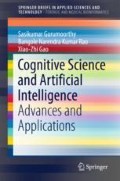Abstract
In this paper we have shown the behaviour of the new k-means algorithm. In k-means clustering first we take the ‘n’ number of item sets, then we group those item sets into the k clusters by placing the item set in the cluster with nearest mean. The traditional k-means clustering is completely depend on initial clusters and can be used only on spherical-shape clusters. The traditional k-means clustering uses the euclidean distance but in our paper we have replaced it with minkowski distance and combined with the Generalized Sequential Pattern algorithm (GSP algorithm) to find the frequent item sets in the sequential data stream. The GSP algorithm based on the frequent item sets, it traces the databases iteratively. The modified k-means clustering have reduce the complexity and calculations and the GSP algorithm has given the better result than any other algorithm to find the frequent item sets. The results show that this approach has given the better performance when compared to the traditional k means clustering.
Access this chapter
Tax calculation will be finalised at checkout
Purchases are for personal use only
References
Redmond, S.J., and C. Heneghan. 2007. A method for initialising the K-means clustering algorithm using kd-trees. Pattern Recognition Letters 28 (8): 965–973.
Hartigan, J.A., and M.A. Wong. 1979. Algorithm AS 136: A k-means clustering algorithm. Journal of the Royal Statistical Society: Series C (Applied Statistics) 28 (1): 100–108.
Kanungo, T., D.M. Mount, N.S. Netanyahu, C.D. Piatko, R. Silverman, and A.Y. Wu. 2002. An efficient k-means clustering algorithm: Analysis and implementation. IEEE Transactions on Pattern Analysis and Machine Intelligence 24 (7): 881–892.
Qi, J., Y. Yu, L. Wang, and J. Liu. 2016, October. K*-means: An effective and efficient k-means clustering algorithm. In Big Data and Cloud Computing (BDCloud), Social Computing and Networking (SocialCom), Sustainable Computing and Communications (SustainCom) (BDCloud-SocialCom-SustainCom), 2016 IEEE International Conferences, 242–249. IEEE.
Bradley, P.S., and U.M. Fayyad. 1998, July. Refining Initial Points for K-Means Clustering. ICML 98: 91–99.
Author information
Authors and Affiliations
Corresponding author
Rights and permissions
Copyright information
© 2018 The Author(s)
About this chapter
Cite this chapter
Sarvani, A., Venugopal, B., Devarakonda, N. (2018). A Refined K-Means Technique to Find the Frequent Item Sets. In: Cognitive Science and Artificial Intelligence. SpringerBriefs in Applied Sciences and Technology(). Springer, Singapore. https://doi.org/10.1007/978-981-10-6698-6_5
Download citation
DOI: https://doi.org/10.1007/978-981-10-6698-6_5
Published:
Publisher Name: Springer, Singapore
Print ISBN: 978-981-10-6697-9
Online ISBN: 978-981-10-6698-6
eBook Packages: EngineeringEngineering (R0)

